Highlight
ESI HOSTS WUHAN UNIVERSITY DELEGATION FOR WORKSHOP ON GREEN DEVELOPMENT OF ASIAN COUNTRIES
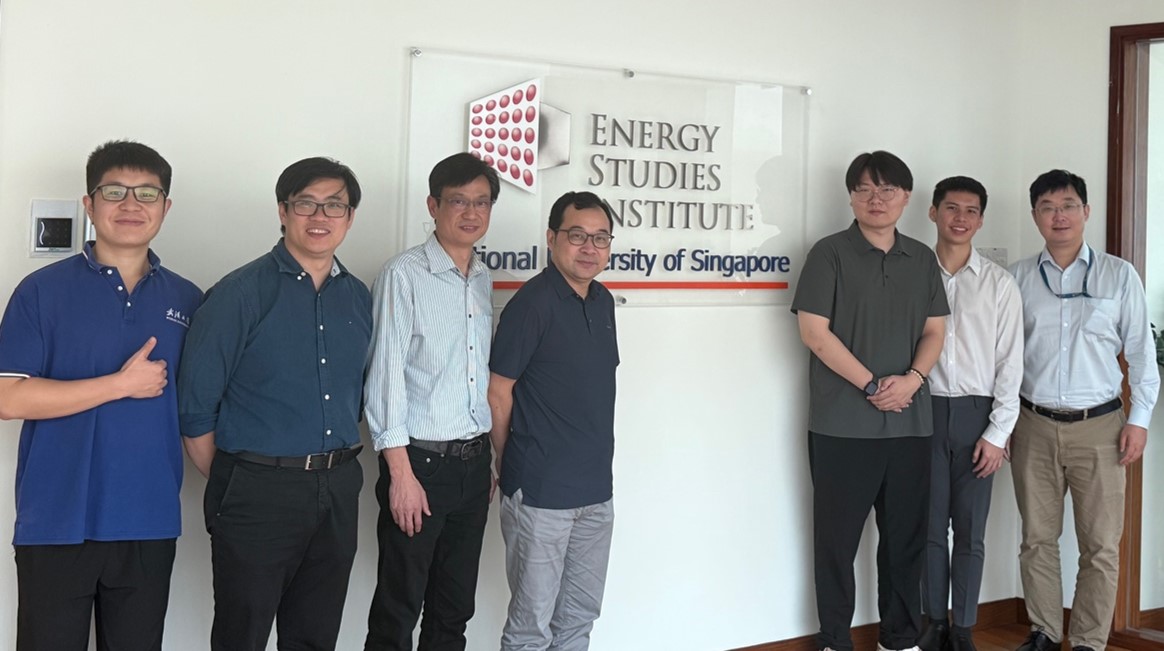
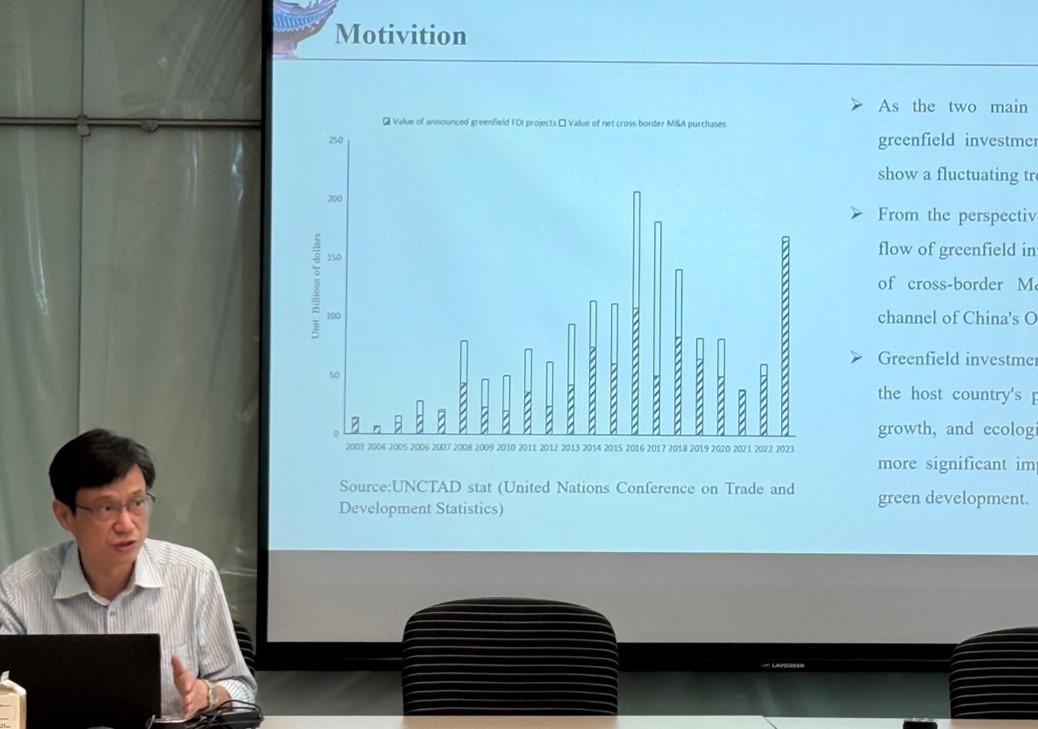
The workshop began with a presentation by Dr. Ling Xiong on "Reexamining "Pollution Haven" or "pollution Halo": China's Greenfield Investment, Environmental Regulation and Host Countries' Green Development." Dr. Xiong's research highlighted how China’s greenfield investments significantly enhance the green total factor productivity (GTFP) of host countries, introducing the concept of the "pollution halo effect." He further emphasized that relative environmental regulations in greenfield investments are more effective in promoting green development than the host country’s environmental regulations. Moreover, his heterogeneity analysis revealed that medium-intensity relative environmental regulations are particularly effective in guiding China’s greenfield investments, with notable impacts in Asia and Latin America. Finally, he stressed the importance of directed adjustments in service industry agglomeration and technology spillovers to optimize the green development outcomes of China’s investments.
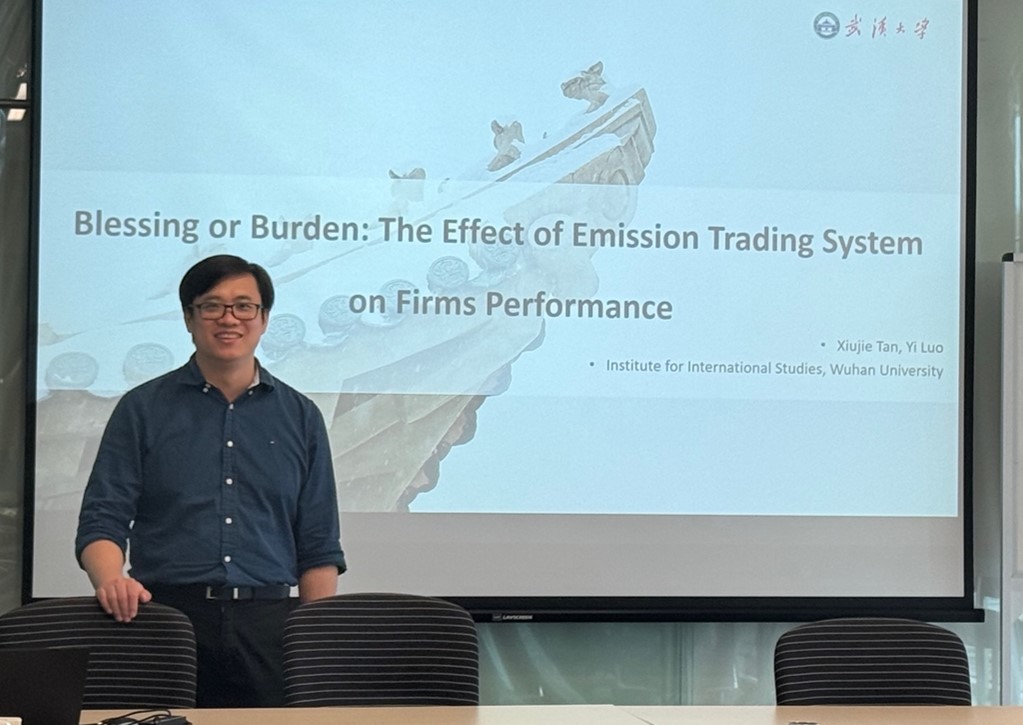
Following this, Dr. Xiujie Tan delivered a presentation on "Burden or Blessing? The Effect of Emission Trading System on Firms' Performance" He explored the robust positive impact of China’s emissions trading scheme (ETS) pilot policy on firm performance. Dr. Tan also analyzed the heterogeneous financial performance-improving effects of the ETS policy, particularly in terms of enterprise competitiveness and cost pass-through mechanisms. He emphasized that the effective implementation of the carbon market incentivizes firms to enhance their competitiveness, while validating the role of producer price index cost pass-through mechanisms in achieving economic and environmental objectives. This analysis provides valuable policy insights for improving carbon market mechanisms.
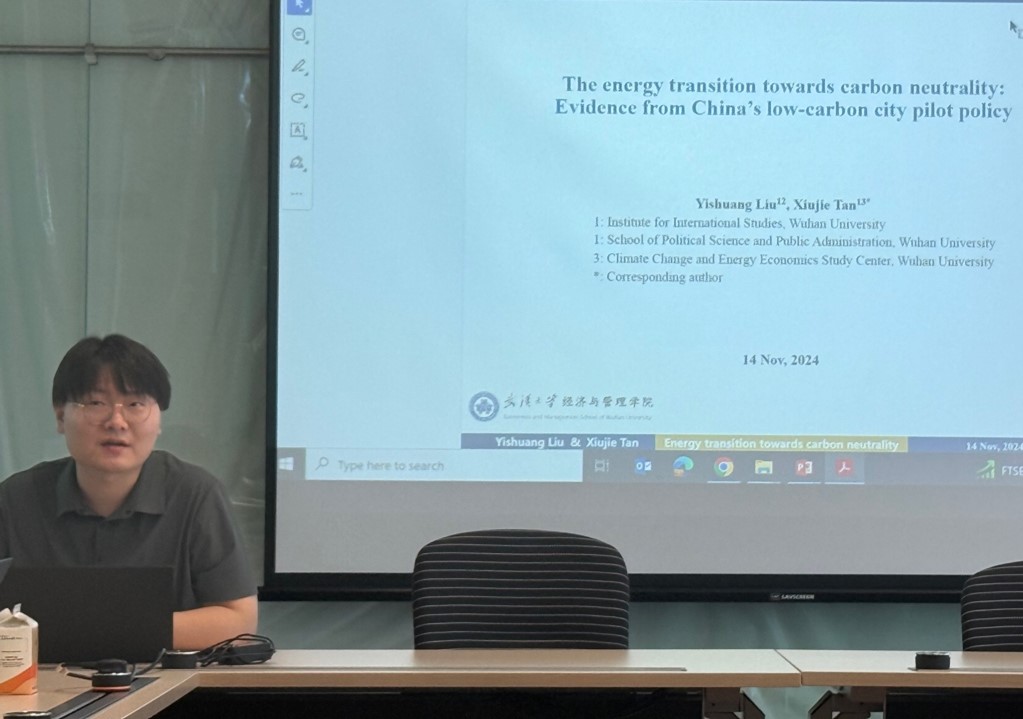
Next, Dr. Yishuang Liu shared his research on "The Energy Transition Towards Carbon Neutrality: Evidence from China's Low-carbon City Pilot Policy." His study focuses on assessing the impact of the low-carbon city pilot policy, launched in 2010, on the total factor productivity (TFP) of renewable energy companies in China. Using a panel dataset of Chinese A-share renewable energy listed companies from 2009 to 2020, Dr. Liu demonstrated that the policy led to a 2.83% average increase in corporate TFP. The research is grounded in the CES utility function and Melitz heterogeneous theory, establishing a causal link between the policy and corporate performance. It identifies three key mechanisms driving this improvement: enhanced policy attention, economic support, and technological innovation. Dr. Liu also highlighted the heterogeneous effects of the policy across different pilot batches, with stronger impacts in earlier pilot cities. Furthermore, he discussed the broader economic outcomes, including a 41.09% increase in public electric vehicle charging piles, illustrating the policy’s role in promoting energy infrastructure development and supporting regional carbon neutrality goals. This comprehensive study underscores the effectiveness of national pilot policies in advancing renewable energy development and corporate productivity.
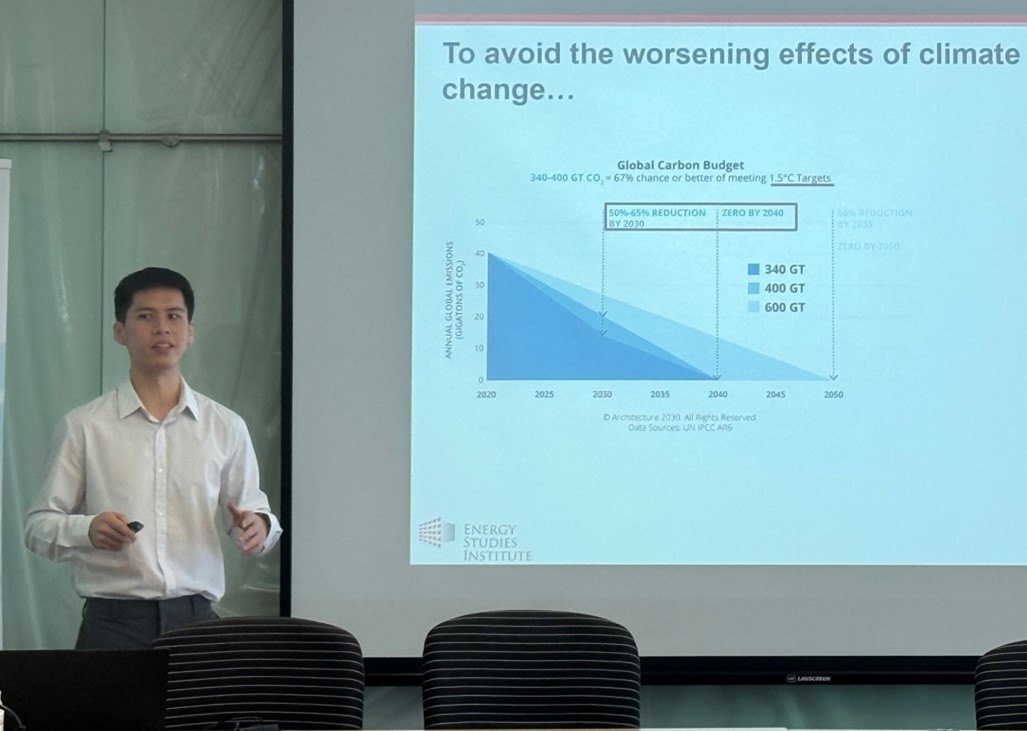
The following presentation was delivered by ESI Research Associate Zheng Xuan Hoy, titled "Assessing Carbon Budgets and Reduction Pathways in Different Income Levels with Neural Network Forecasting." He evaluated carbon budgets and reduction pathways across income levels using neural network technologies, highlighting the critical role of international aid and technology transfer in enhancing climate resilience in low-income countries. He noted that high-income nations should lead in renewable energy innovation and policy collaboration, while middle- and low-income nations must prioritize addressing the conflicts between climate action and pressing needs such as poverty and healthcare. His findings align closely with multi-tiered strategies for enhancing climate resilience, from regional cooperation to ecosystem-based adaptation measures, offering new perspectives for equitable climate action.
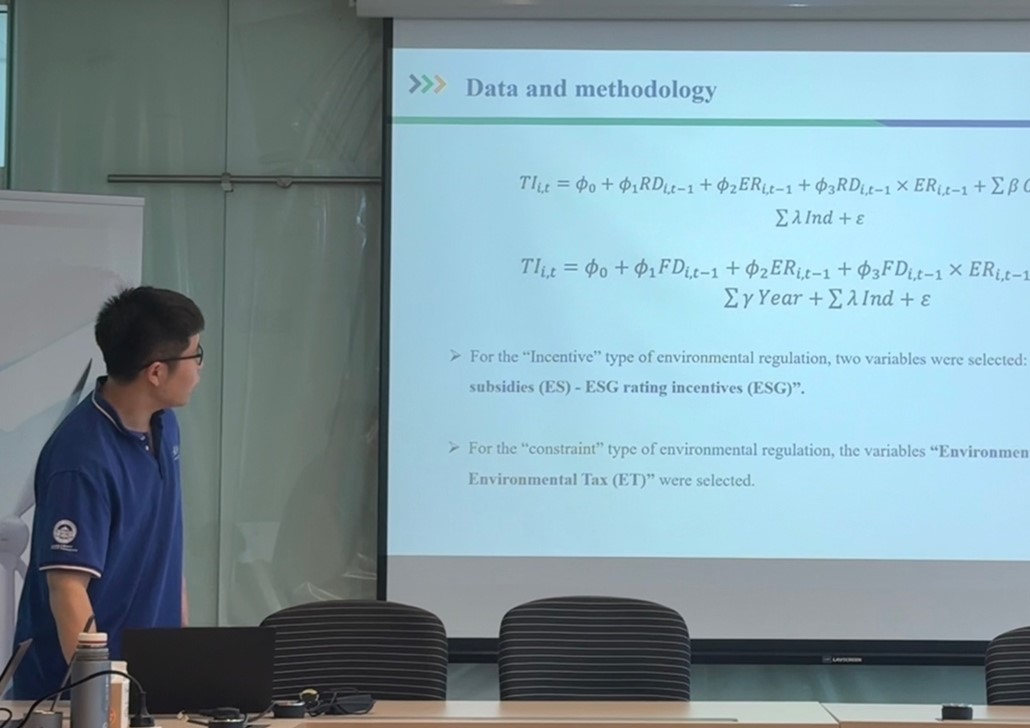
Finally, Shuo Yan presented on "Digital Economy and Green Transition." He proposed leveraging digital technologies to optimize financial efficiency and enhance financial structures, creating multi-dimensional mechanisms for high-quality financial development. He also highlighted the critical role of various types of environmental regulations in fostering green technological innovation. Shuo emphasized that precise policymaking to integrate financial development with environmental regulatory tools is a vital pathway to achieving a low-carbon economy. His recommendations provide new directions for future policymaking in green transitions.